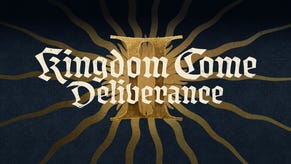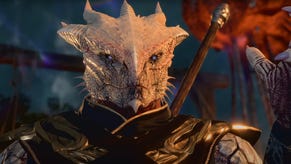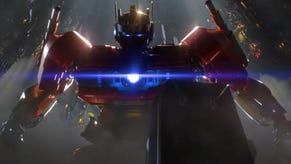Tekken Tag Tournament 2: down the rabbit hole
Stace Harman ventures into the bright lights of Las Vegas to speak to series creator Katsuhiro Harada about expanding the audience of Tekken Tag Tournament 2.
Las Vegas truly is a city that never sleeps. It's a potent mix of determined hedonism and perpetual soft-lighting conspire to bewilder one’s body-clock and ensure that cocktail-supping revellers are ever present, in bars or at hotel casino tables, 24-hours a day.
The resultant sensory overload means we’re still struggling to re-evaluate social norms as we’re ushered into one of the many conference suites of the Namco Bandai Global Gamers Day, where we’re met by Tekken Tag Tournament 2 director Katsuhiro Harada. Harada is resplendent in a white pin-stripe suit, with matching waistcoat, black shirt, white tie and oversized sunglasses. The blinds are tightly drawn, the room is air conditioned. It’s 9am and it feels like we’ve tumbled down a rabbit hole.
Michael Murray, Harada’s proficient translator and Tekken Tag Tournament 2 game director, is more quietly attired but stifles a yawn that makes it difficult to ascertain whether the pair has just come from the breakfast table or the Blackjack table. Regardless, Harada and Murray are all business as the assembled UK press gather round to be schooled in the ways of the exploding fist.
“We’ve been making [Tekken] for over 17 years and one question that we often have from novice players and the press is what can we do to help players improve,” begins Harada. “We first implemented practice mode in Tekken 2 back in the day but recently we’ve noticed that it’s only really the advanced players that put any time into.”
For the most part, novice players have neither the time nor inclination to hit the dojo in order to perfect technique, understand frame-data or patiently experiment to find which of the large roster of characters best suit their play style. How, then, to attract new players to spend time with a game whose title implies competence with multiple fighters is a necessity without use of a tutorial or standard practice mode?
“In Fight Lab, we’ve created a series of mini-games that help improve players’ skills without it feeling like a tutorial,” Harada pre-empts. “What’s great about Fight Lab is that it rewards players and provides a great entry point to the game. I think advanced players will see this and understand that they can recommend this mode to their friends that perhaps aren’t yet fans of Tekken.”
I, Combot
Fight Lab and Combot are inextricably linked and serve a multitude of purposes for players of various skill levels. For the novice, guiding Combot through Fight Lab teaches the basics of sidestepping, aerial juggling and zoned-hitting; mixing up mini-games with learning new skills and fighting techniques that are quickly grasped and slowly mastered. Happily, this doesn’t entail repeating a dry list of commands until success is fluked, but instead sees a face off against a gradual building of waves of drones laden with tangible rewards and presented with glimpses of mischievous humour.
A score-attack element, based on accuracy and speed, draws in the intermediate player as they drill through dozens of enemy drones to achieve a high-score. Points mean prizes and so items are awarded with which to customise Combot and, upon achieving significant milestones, include famous Tekken moves such as Nina’s Blonde Bomb and Paul’s Phoenix Smasher, facilitating the creation of a bespoke Combot with a mix of aesthetic flourishes and varied move sets.
By rewarding progress, Fight Lab becomes less a series of tasks to be ticked-off and more a rewarding game mode unto itself, whilst still enabling advanced players to hone their skills or create their dream Tekken fighter.
Were I a marketing man or an insufferable prick, I might say that Namco looks to have successfully gamified the fight tutorial.
Were I a marketing man or an insufferable prick, I might say that Namco looks to have successfully gamified the fight tutorial. However, I am not the former and only occasionally the latter and so instead I’ll opt for saying that Namco has injected some fun into a traditionally dry and uninspiring mode and Fight Lab looks to have a purpose for players of all skill levels.
Harada confirms that Combot can be used in various other modes, both on and offline – though in the interest of fairness this is unlikely to include ranked matches – and so if the 50 pre-defined fighters of Tekken Tag Tournament 2 aren’t enough, there’s the option to create a handful of Combot hybrids.
It takes two to tag
Learning the basics is but half the challenge, however, and being able to handle one character is a far cry from being confident enough to implement the tactics of tag play. Here too, Namco has introduced a stepping stone that gives novice players a chance to ease into Tekken Tag Tournament 2’s team-based core; it’s as simple as two against one.
Regardless of whether your opponent opts for a tag-team, there’s always the option to go solo and so concentrate on just one move set and set of tactics. Playing as one fighter provides a boost to both attack and defence and makes the primary goal to defeat just one of the opponent’s two fighters, encouraging offensive play to try to stop them from tagging in. Through this style of play comes the ability to fight competently as a single character and then slowly add secondary characters before being able to tie them together.
“What’s important, is that people that can use solo fighters now have an option to play against those that use tag,” Harada sums-up.
It’s a brilliantly simple solution that removes the barrier to entry for non-Tekken zealots and is a mode that Namco would do well to highlight in order to entice new players to the fold. However, Harada is keen to stress that long-term Tekken fans are still at the heart of what the team does.
“It’s difficult, because we do place a lot of value on the hardcore players and their input into the game which could be a construed as a problem for some less experience players; whereas if we say that we’re trying to cater to less skilled players we can get slammed on the internet,” Harada offers, frankly.
“Since we understand what the core players want because we ourselves feel the same way, we have to make a point to listen to the lighter audience view or even to some fans that don’t currently play our game but look like they might; we have to make an effort to implement a good balance.”
With both Fight Lab and the option for two against one, Namco is addressing two of the most imposing obstacles to new players. In fact, Harada’s explanation of these modes is among the most considered, logical and sensible things that I hear the whole time that I’m in the crazy city of Las Vegas; and that’s from a man in a white pinstripe suit.
Tekken Tag Tournament 2 launched on PS3 and 360 in September. [image]




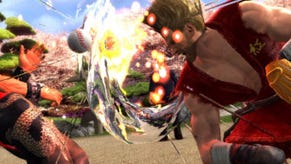
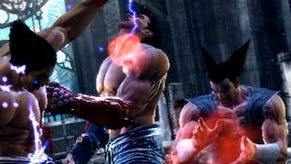

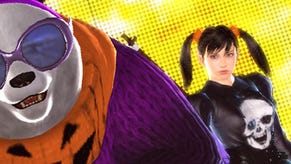
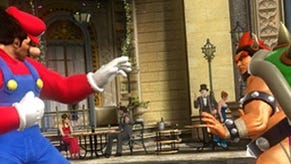
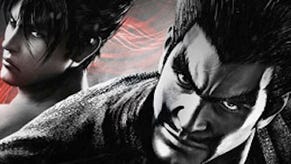
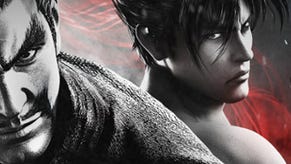
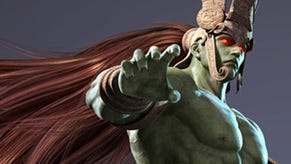

.jpg?width=291&height=164&fit=crop&quality=80&format=jpg&auto=webp)

